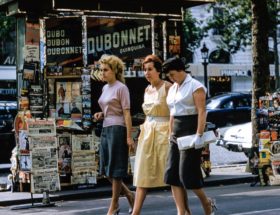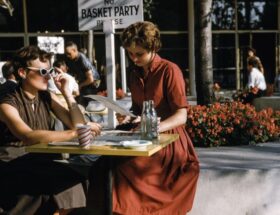By Pauline Weston Thomas for Fashion-Era.com
The first three pages in this section are to get you thinking about what might be involved in buying or selling vintage clothing. Reading around the subject is essential and should include both costume knowledge, and vintage/antique understanding. My opinion of this subject is just that - my opinion. Nothing is set in stone with selling or buying antique clothing.
- What is Vintage Fashion?
- How the Term Vintage Originated
- Antique Defined
- Antique Clothing from Vintagetextile
- Contentment Farm Vintage
- Vintage Defined
- Retro Defined
- Brand Vintage or Designer Vintage
- Retro Repros (Retrospective Reproductions)
- Recollections Reproduction Late Victorian Style Dress
What is Vintage Clothing?
Try to absorb exactly what work is involved in preparing your vintage clothing before you begin visualizing yourself as both buyer or seller and what might be expected in your transactions. It is far more demanding if done properly and with a professional approach than most beginners imagine. A real love for the fashion garments will be your best asset, rather than being obsessed with bargains.
If you plan to resell remember a bargain is only a bargain long term if it is what a future buyer wants.
Vintage Clothing Definition
People are constantly querying what exactly are vintage clothes. There's no doubt that whether or not an item is Vintage is in the eye of the beholder. Essentially it must belong to another era, and most usually because of limited supply, a particular 18th, 19th or 20th century decade that someone thinks is collectible for them.
It's not necessarily haute couture vintage only that sells as vintage, but often just good brand names or custom made garments that are either unusual examples of an era's fashions or more often very typical items of an era that have a certain style and design value, making them the staple of the vintage trade today.
How Old is Vintage Clothing?
Such items have that elusive quality that made them just as desirable in their heyday. So you may be shocked to learn that many collectors of used quality clothing define items as 70's vintage or 80's vintage. A vintage purist will tell you that anything within the past 15 years should be referred to as contemporary. I have to agree.
One factor that is always important whatever the garment's age, is quality and desirability combined with worth owning. Just because an item is old, does not mean that it is a desirable vintage item.
As a consumer or seller, it is important to think about why a vintage item is desirable. Usually quality shines through. A moth-eaten half-faded 1940s wool dress is far less desirable to the vintage collector, who may well acknowledge it is a 1940s original, but the fact is, it is still a damaged original.
What is Considered Vintage Clothing?
Vintage was originally related to the year a wine or oil was bottled. Then the word passed into general usage to mean the year a particular item was made. First, it was used to describe vintage cars, meaning cars that were at least 50 years old.
Next dealers of second-hand clothing took this stage further and used it to describe vintage clothes. Now many sellers and buyers use vintage fashion style as a term to describe almost all previously owned second-hand clothing 25 years or more years age.
More recently and particularly with the rise of internet trading, others have begun to include 1980s items of clothing and accessories. The market has become confused, yet more high profile at the same time.
Those of us who lived through the 1970s will always find it hard to think of these clothes as vintage. The fact is that the term vintage designer is being used more and more for more recent, living or dead designer garments.
It can be taken to mean a not-new, quality-designed fashion item or accessory, still showing great flair and capable of making an original vintage style statement. Purists are rightly unhappy with this, but the main thing is to understand there are differences and you must be vigilant in finding out more about any items you buy under the term vintage.
Generally, there are more specific categories and many often define them far too loosely, but this is my understanding of vintage bearing in mind my love of costume.
The differences include:
Antique Clothing
Over 100 years old would be the strict definition. But now often taken to mean anything from 1920 or earlier when referring to antique clothing. As they become rarer these garments and accessories are frequently the type of items museums like to get their hands on.
Museums like to fill gaps in their collections. They also like to create themes or collections based around an art movement like Art Deco or Baroque.
Featured in this section are some wonderful antique clothing pictures from two high-class vintage clothing dealers. The first is called www.vintagetextile.com For me this site is what a stand-alone vintage clothing website should be like. It sells a range of the finest quality articles, often couture and mostly with superb provenance.
They show the most detailed pictures of the items for sale and have explanatory detailed expert write-ups. Many of the artifacts they sell are museum quality and can be found in both mint and excellent condition. Browsing their site is a sensory visual experience. They also have tips about the concepts of value and market worth for the dedicated collector.
I'll be showing some more images of more items from vintagetextile on another page in this section.
This French crewel embroidered linen skirt from vintagetextile, is a matchless example of C18th needle art with a hand-embroidered point de chainette pattern and hand-stitched seams and hem.
The extensive written provenance is powerfully resonant with history. The condition is very good to excellent. At the time of writing this skirt was for sale.
Vintage Clothing
In my opinion, this is anything from 1920 onward to 1960. Personally, I do not think that in selling vintage clothing online you should use the word vintage for anything later than the sixties decade. It can of course be used in conversation to mean an aging interesting garment, but when selling, sticking to a realistic date to mean vintage is important and shows you really understand the concept.
The vintage fashion style items shown below are typical of the fine vintage goods sold there, which include Regency to mid-C20th items of all varieties including shoes, shawls, bags, hats to quilts. I like the way Candy, the owner of this site describes the wide selection of goods she displays, never hiding material information, and selling with frank and reliable honesty.
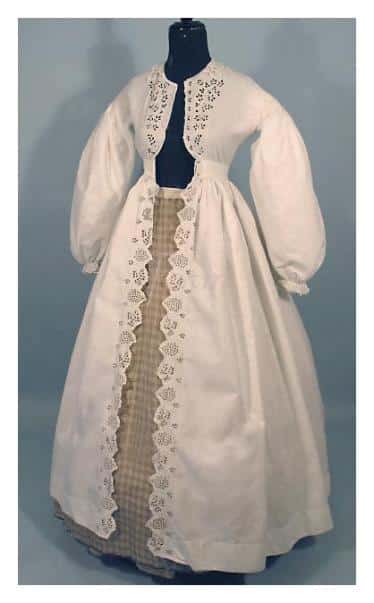
Retro Clothing
The 1960s and 1970s clothing is usually considered Retro or Funky stuff rather than vintage. The rest of the decades are up for debate now as 80's fashion is gaining in popularity.
Sadly it often crowds out true vintage buys, leaving the market confused and damaged, sidelining true vintage clothing.
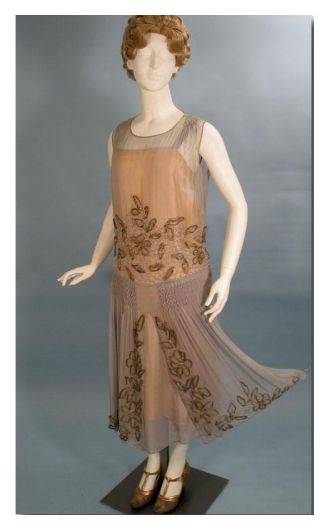
Whether it is really vintage clothing is a moot point.
Some 1970s Polyester vintage for example is considered less desirable than attractive 80s garments unless they are exceptionally cool.
I can only tell you I'm frustrated when searching for vintage fashion style websites because recently so much lesser produce like this appears in listings under the guise of vintage fashion. I'm not keen on this - so much bad stuff is mixed in with items of real vintage worth.
Brand Vintage or Designer Vintage Clothing
These include certain brands that are collected post the season they first hit the marketplace. More and more they are being described as designer vintage - for example, Versace Vintage or Norma Kamali vintage when only a few years old.
Retro Repros (Retrospective Reproductions)
In general terms, these are garments made for example for re-enactments such as Centenaries, Civil War, Medieval Banquets, Christmas and Autumnal Craft Fayres, and living history weekends. Fabrics available today are usually used to reproduce costumes as authentically as possible.
On the internet, you will need to read between the lines of some descriptions at online auctions where the term vintage is sometimes used blatantly to describe retro repro garments where certain sellers set out deliberately to deceive. This is very different from sellers who state clearly that the garments they sell are specifically modern reproductions of clothes from other eras.
Sellers of re-enactment pieces who sell Victorian-styled Crinoline, bustle dresses, and Leg o' Mutton 1890's items include the reputable website at recollections.biz (unfortunately, they are out of business as of today)
We have more vintage reproductions dresses explanations on another page.
Recollections make washable garments to fit modern measurements, as well as being wholesale dealers of re-enactment items. There are others that do this too including hat makers like Diane Siverson or lone workers with an interest in costume.
A Google search on reproduction dresses will bring up many other companies. But I feel Recollections is trying to offer goods in a very wide size range often outside the usually smaller sizing on vintage clothing.
They price fairly and this price is truly comparable to making your own when one considers the volume of fabric required, the purchase of a pattern, and the effort involved in constructing it to get a fair representation of a past gown.
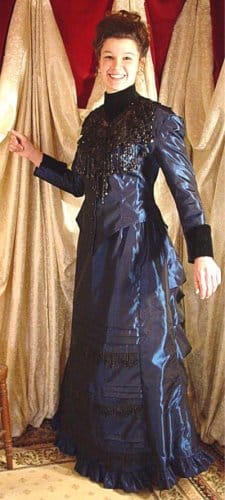
This is a good example of a modern reproduction version of a late Victorian dress. It can be made to the wearer's figure measurements and height and in a color choice from a range of about 8 shades. The bonus of this dress is that it can be safely worn for re-enactment and easily laundered after wear.
It is not the same as vintage. It is a good wearable reproduction costume and can be mixed with vintage.
Vintage Clothing for Re-enactment
You may of course wish to use modern dress patterns from pattern companies such as Simplicity or Butterick and purchase vintage or special repro patterns to make your own reproduction costumes. You can also scale original patterns from books like Patterns of Fashion by Janet Arnold etc.
Alternatively for re-enactment, you may wish to purchase ex-theatrical stock for the same purpose. There is nothing wrong with any of this, but just remember it should not later be resold as vintage but as reproduction clothing.
